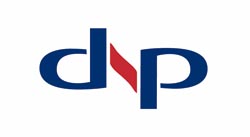- According to screen manufacturer dnp Denmark, 10 years ago around 50 percent of all meeting-room installations involved rear projection, for the simple reason that no other solution could offer the same brightness and contrast levels for the same budget. Today, that figure may be no higher than 1 percent. The reason isn't hard to find: projectors are much brighter than they were, and that brightness has become much more affordable. Today, the advantages of front projection-particularly the absence of a requirement for space behind the screen surface-are simply too clear to ignore, for integrators and end-users alike.
- dnp's headquarters are in the sleepy Danish town of Karlslunde, about a 30-minute drive from Copenhagen. The company has been located here ever since it was founded, as ScanScreen, by the Clausen brothers in 1989. The brothers were better at engineering optical-screen solutions than they were at selling or marketing them, and sold out to Japan's Dai Nippon Printing company (hence 'dnp') nine years later.
- Today 75 people work at the Karlslunde plant, while dnp also maintains manufacturing facilities in Mihara, Japan, and in San Diego. When it comes to big screens, though, Denmark is where the action is.
- "There is a huge difference between producing a 65- to 70-inch screen, which can take as little as three or four minutes, to a large screen for professional use, which takes some hours," explained Matthias Mikkelsen, one of dnp's area sales managers. The company uses enormous machines to create its own lenticular and fresnel molds to stamp its own formula of plastic.
A rigid version of dnp's new Supernova screen in one of its natural habitats-a brightly lit conference room.?
The bigger the screen, the more complex the relationship between the optical lens elements, and the finer the line between a perfect product and an imperfect one. Hence the need for more time during production, more manual testing of screen output, and more care when handling and transporting the screen.
And when we say big, we mean big. Ten years ago dnp introduced its first 200-inch optical screen, which is still the largest of its kind in the world. This was followed in 2001 by the Black Bead screen, which offered superior uniformity for the command-and-control sector. The same year, dnp unveiled the HoloScreen-a translucent rear-projection solution for point-of-purchase applications.
Then, two years ago, dnp unveiled Supernova, its first optical screen designed specifically for front-projection applications. Using a technology jointly developed between Denmark and Japan, the Supernova screen surface comprises seven different layers to form an optical 'sandwich', which, unlike most front-pro technologies, can be used comfortably in high ambient light conditions. Supernova's optical lens system focuses and concentrates the projected light before reflecting it back at the viewer, while a patented contrast enhancement filter absorbs diffused light from windows and room lighting.










